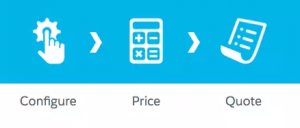
Imagine you’re leading a sales team, and every time a customer asks for a quote, your team has to dig through countless spreadsheets, emails, and product lists just to generate a simple price. Sounds stressful, right? That’s where Salesforce CPQ (Configure, Price, Quote) comes to the rescue! This tool is a game-changer for organizations looking to streamline the entire sales process. But, like any powerful tool, it needs to be implemented correctly to unlock its full potential. Here’s a story-like journey through the 10 best practices for implementing Salesforce CPQ in your organization.
-
Understand Your Business Requirements
The first step to implementing Salesforce CPQ is understanding what your business truly needs. You wouldn’t buy furniture without measuring the space in your home, right? The same principle applies here. You need to know what you’re configuring. Are you dealing with subscription-based products, one-time purchases, or a combination of both? What are your pricing models—tiered, volume-based, or flat-rate?
Take a moment to map out your product catalog and pricing structure. This will help you configure CPQ in a way that fits your business rather than trying to make your business fit into CPQ.
Key Point: Document your requirements carefully and get input from stakeholders across departments to ensure no critical detail is missed.

-
Start with Clean Data
Imagine trying to build a house on a shaky foundation. It’s bound to collapse sooner or later, right? In the same way, dirty data will lead to issues down the line in Salesforce CPQ. Data cleanup should be your first focus before implementation. This means ensuring your product catalog, customer data, and pricing information are accurate and up-to-date.
This step can be time-consuming, but it’s absolutely worth it. Clean data ensures that your quotes are correct, your reports are accurate, and your system runs smoothly.
Tip: Dedicate time to audit your data and remove duplicates, errors, and outdated information.
-
Customize for Simplicity, Not Complexity
CPQ allows for a high degree of customization. But here’s the catch: just because you can customize something doesn’t mean you should. Customizing CPQ too much can lead to a complex system that’s hard to manage and confusing for users.
Focus on customizing only what’s essential. The best systems are those that make the complex simple, not those that add unnecessary layers of complexity.
Example: If you have a set of standard products, don’t add hundreds of customization options unless absolutely necessary. This will keep the quoting process swift and efficient.
-
Train Your Team Early
Even the most sophisticated tool is ineffective if people don’t know how to use it. Start training your sales team early in the process. The earlier they become comfortable with CPQ, the quicker they’ll be able to harness its full potential.
Host workshops, create user-friendly guides, and ensure there are ongoing support channels available, so your team isn’t left in the dark once CPQ goes live.
Important Tip: Involve end-users in the implementation process. This will allow them to provide feedback and feel more comfortable with the tool.
-
Leverage Standard Features
Salesforce CPQ comes loaded with a range of features, but you don’t need to reinvent the wheel. Instead, look for standard, out-of-the-box functionality before resorting to custom development. This ensures you benefit from updates and reduces the long-term maintenance effort.
Salesforce CPQ is continuously improved with new features, and using the standard options keeps your system in line with these updates.
-
Automate Where Possible
One of the most exciting aspects of Salesforce CPQ is its automation potential. By automating repetitive tasks like quote generation, approvals, and discount calculations, you free up your sales team to focus on building relationships and closing deals.
Set up approval workflows, so quotes above a certain threshold automatically go for managerial approval. Automate pricing rules based on quantity or customer type to ensure consistent and error-free pricing.
-
Monitor Performance and Adjust
The journey doesn’t end once CPQ is implemented. Like any system, it needs ongoing monitoring and adjustment to ensure it’s meeting your business goals. Regularly check key metrics such as quote approval times, error rates, and customer satisfaction.
CPQ is dynamic and can grow with your business. If something isn’t working quite right, don’t hesitate to make adjustments.
-
Test, Test, Test
Before rolling out Salesforce CPQ to your entire organization, take the time to test every aspect of it. Create multiple test scenarios that mimic real-world use cases to ensure everything runs smoothly.
Testing helps you identify any potential bottlenecks or issues, and it ensures your system is fully operational before it’s exposed to your entire sales team.
Bullet Point Reminder:
- Test quote generation
- Test pricing accuracy
- Test discount approvals
- Test automation workflows
-
Get Executive Buy-In
CPQ implementation isn’t just a technical project; it’s a strategic initiative that will transform your sales process. Make sure your executive team is fully on board. Their buy-in ensures the project gets the resources it needs and that the entire organization sees the value in the tool.
When leadership is excited about the possibilities, it becomes easier to get everyone else on board too.
-
Document Everything
Lastly, never underestimate the power of good documentation. You’ll thank yourself later when there’s a need to onboard new team members or make system changes. Document your configurations, customizations, workflows, and any lessons learned during the implementation process.
Having this information readily available will save you time and headaches down the road.

